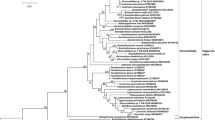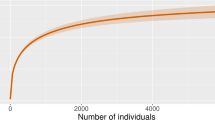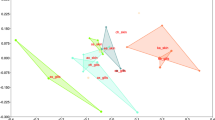Abstract
Recent anecdotal reports from seafood processors in eastern Australia have described an increased occurrence of post-mortem myoliquefaction (‘jellymeat’) in broadbill swordfish Xiphias gladius, and macroscopic cysts throughout the musculature of yellowfin tuna Thunnus albacares. A genus of parasitic cnidarians, Kudoa (Myxosporea, Multivalvulida), species of which are known to occur in economically important wild-caught fish species globally, can cause similar quality-deterioration issues. However, Kudoa sp. epizootiology within commercially harvested, high-value fish caught within Australia is poorly understood, despite the parasite’s economic importance. To determine the causative agent responsible for the observed quality deterioration in swordfish and yellowfin tuna, muscle-tissue samples from seafood processors in Mooloolaba, Australia, collected from October 2019–February 2020, were examined for parasitic infection. Kudoid myxospores were identified from both hosts and were subquadrate in shape, with four equal-sized polar capsules. The SSU rDNA sequences from both fish shared > 99% identity to Kudoa species. Kudoa musculoliquefaciens was isolated from 87.1% of swordfish sampled, suggesting that it is a widespread parasite in swordfish from the southwest Pacific Ocean. This study provides the first molecular and morphological characterisation of Kudoa thunni in yellowfin tuna and K. musculoliquefaciens in swordfish harvested from the waters of eastern Australia, expanding the geographical distribution of K. thunni and K. musculoliquefaciens to include the Coral and Tasman Seas. We demonstrate that not all infected swordfish progress to jellymeat, show the usefulness of molecular tools for reliably identifying infection by Kudoa spp., and add to the overall knowledge of kudoid epizootiology in wild-caught fish.



Similar content being viewed by others
Data availability
All sequence data have been deposited in the National Center for Biotechnology Information (NCBI) database (https://www.ncbi.nlm.nih.gov/). The K. thunni SSU rDNA sequence was deposited under MW492581. The K. musculoliquefaciens SSU rDNA sequence was deposited under MW492582. The uncropped images underlying the figures were deposited in the Figshare repository: https://doi.org/10.6084/m9.figshare.13671856.
References
Anisimova M, Gascuel O (2006) Approximate likelihood-ratio test for branches: a fast, accurate, and powerful alternative. Syst Biol 55:539–552
Balli J, Mladineo, I, Shirakashi S, Nowak BF (2016) Chapter 11: diseases in tuna aquaculture. In: Bennetti DD, Partridge GJ, Buentello A (eds) Advances in tuna aquaculture. Academic Press, pp 253-272
Bartošová P, Fiala I, Hypša V (2009) Concatenated SSU and LSU rDNA data confirm the main evolutionary trends within myxosporeans (Myxozoa: Myxosporea) and provide an effective tool for their molecular phylogenetics. Mol Phylogenet Evol 53:81–93. https://doi.org/10.1016/j.ympev.2009.05.018
Blaylock RB, Bullard SA, Whipps CM (2004) Kudoa hypoepicardialis n. sp. (Myxozoa: Kudoidae) and associated lesions from the heart of seven perciform fishes in the northern Gulf of Mexico. J Parasitol 90:584–593. https://doi.org/10.1645/GE-161R
Burger MAA, Adlard RD (2011) Low host specificity in the Kudoidae (Myxosporea: Multivalvulida) including seventeen new host records for Kudoa thalassomi. Folia Parasitol. 58:1–16. https://doi.org/10.14411/fp.2011.001
Burger MAA, Barnes AC, Adlard RD (2008) Wildlife as reservoirs for parasites infecting commercial species: host specificity and a redescription of Kudoa amamiensis from teleost fish in Australia. J Fish Dis 31:835–844. https://doi.org/10.1111/j.1365-2761.2008.00958.x
Dereeper A, Guignon V, Blanc G, Audic S, Buffet S, Chevenet F, Dufayard JF, Guindon S, Lefort V, Lescot M, Claverie J-M, Gascuel O (2008) Phylogeny.fr: robust phylogenetic analysis for the non-specialist. Nucleic Acids Res 36:465–469
Diamant A, Ucko M, Paperna I, Colorni A, Lipshitz A (2005) Kudoa iwatai (Myxosporea: Multivalvulida) in wild and cultured fish in the red sea: redescription and molecular phylogeny. J Parasitol 91:1175–1189. https://doi.org/10.1645/GE-491R.1
Eiras JC, Saraiva A, Cruz C (2014) Synopsis of the species of Kudoa Meglitsch, 1947 (Myxozoa: Myxosporea: Multivalvulida). Syst Parasitol 87:153–180. https://doi.org/10.1007/s11230-013-9461-4
Evans K, Patterson T, Pedersen M (2011) Movement patterns of yellowfin tuna in the Coral Sea region: defining connectivity with stocks in the western Pacific Ocean region. CSIRO Marine and Atmospheric Research and the Australian Fisheries Management Authority, pp 1–64
Forrest AJ (2007) Improving swordfish quality. Dissertation, University of Queensland
Gaglio G, Marino F, Monaco S, Giannetto S (2010) Muscle change due to Kudoa sp. (Myxosporea: Multivalvulida) in a specimen of swordfish caught in the Mediterranean Sea. Large Anim Rev 16:291–293
Giulietti L, Mattiucci S, Paoletti M, Grevskott DH, Bao M, Cipriani P, Levsen A (2019) Morphological and molecular identification of a new Kudoa thyrsites isolate in Mediterranean silver scabbardfish Lepidopus caudatus. Dis Aquat Organ 132:125–134. https://doi.org/10.3354/dao03316
Gleeson RJ, Bennett MB, Adlard RD (2010) First taxonomic description of multivalvulidan myxosporean parasites from elasmobranchs: Kudoa hemiscylli n.sp. and Kudoa carcharhini n.sp. (Myxosporea: Multivalvulidae). Parasitology 137:1885–1898. https://doi.org/10.1017/S0031182010000855
Griffin M, Quiniou S, Ware C, Bogdanovic L, Soto E (2014) Kudoa thunni from blackfin tuna (Thunnus atlanticus) harvested off the island of St. Kitts. West Indies J Parasitol 100:110–116. https://doi.org/10.1645/12-142.1
Henning SS, Hoffman LC, Manley M (2013) A review of Kudoa-induced myoliquefaction of marine fish species in South Africa and other countries. S Afr J Sci 109:1–5. https://doi.org/10.1590/sajs.2013/20120003
Hervio DML, Khattra J, Devlin RH, Kent ML, Sakanari J, Yokoyama H (1997) Taxonomy of Kudoa species (Myxosporea), using a small-subunit ribosomal DNA sequence. Can J Zool 75:2112–2119. https://doi.org/10.1139/z97-846
Iversen ES, Van Meter NN (1967) A new Myxosporidian (Sporozoa) infecting the Spanish mackerel. Bull Mar Sci 17:268–273
Kasai A, Li Y-C, Mafie E, Sato H (2016) Morphological and molecular genetic characterization of two Kudoa spp., K. musculoliquefaciens, and K. pleurogrammi n. sp. (Myxosporea: Multivalvulida), causing myoliquefaction of commercial marine fish. Parasitol Res 115:1883–1892. https://doi.org/10.1007/s00436-016-4928-2
Kasai A, Tsuduki H, Jimenez LA, Li YC, Tanaka S, Sato H (2017) Incidence of three Kudoa spp., K. neothunni, K. hexapunctata, and K. thunni (Myxosporea: Multivalvulida), in Thunnus tunas distributed in the western Pacific Ocean. Parasitol Res 116:1137–1150. https://doi.org/10.1007/s00436-016-5369-7
Kawai T, Sekizuka T, Yahata Y, Kuroda M, Kumeda Y, Iijima Y, Kamata Y, Sugita-Konishi Y, Ohnishi T (2012) Identification of Kudoa septempunctata as the causative agent of novel food poisoning outbreaks in Japan by consumption of Paralichtys olivaceus in raw fish. Clin Infect Dis 54:1046–1052. https://doi.org/10.1093/cid/cir1040
Kent ML et al (2001) Recent advances in our knowledge of the Myxozoa. J Eukaryot Microbiol 48:395–413. https://doi.org/10.1111/j.1550-7408.2001.tb00173.x
Konagaya S (1983) Protease responsible for jellification of Myxosporidia-infected swordfish meat. Nippon Suisan Gakkai Shi 49:919–926. https://doi.org/10.2331/suisan.49.919
Langdon JS (1991) Myoliquefaction post-mortem (‘milky flesh’) due to Kudoa thyrsites (Gilchrist) (Myxosporea: Multivalvulida) in mahi mahi, Coryphaena hippurus L. J Fish Dis 14:45–54. https://doi.org/10.1111/j.1365-2761.1991.tb00575.x
Lester RJG (1982) Unicapsula seriolae n. sp. (Myxosporea, Multivalvulida) from Australian yellowtail kingfish Seriola lalandi. J Protozool 29:584–587
Li Y-C, Sato H, Tanaka S, Ohnishi T, Kamata Y, Sugita-Konishi Y (2013) Characterization of the ribosomal RNA gene of Kudoa neothunni (Myxosporea: Multivalvulida) in tunas (Thunnus spp.) and Kudoa scomberi n. sp. in a chub mackerel (Scomber japonicus). Parasitol Res 112:1991–2003. https://doi.org/10.1007/s00436-013-3357-8
Li Y-C, Inoue K, Tanaka S, Zhang J-Y, Sato H (2020) Identification of four new Kudoa spp. (Myxozoa: Myxosporea: Multivalvulida) in commercial fishes collected from South China Sea, Atlantic Ocean, and Bering Sea by integrated taxonomic approach. Parasitol Res 119:2113–2128. https://doi.org/10.1007/s00436-020-06707-2
Lom J, Arthur JR (1989) A guideline for the preparation of species descriptions in Myxosporea. J Fish Dis 12:151–156. https://doi.org/10.1111/j.1365-2761.1989.tb00287.x
M’Gonigle RH, Leim AH (1937) Jellied swordfish. Prog Rep Atlantic Biol Stn 19:3–5
Matsukane Y, Sato H, Tanaka S, Kamata Y, Sugita-Konishi Y (2011) Kudoa iwatai and two novel Kudoa spp., K. trachuri n. sp. and K. thunni n. sp. (Myxosporea: Multivalvulida), from daily consumed marine fish in western Japan. Parasitol Res 108:913–926. https://doi.org/10.1007/s00436-010-2133-2
Matsumoto K (1954) On the two new Myxosporidia, Chloromyxum musculoliquefaciens sp. nov. and Neochloromyxum cruciformum gen. et sp. nov., from the jellied muscle of swordfish, Xiphias gladius Linneaus, and common Japanese sea-bass, Lateolabrax Japonicus. Nippon Suisan Gakkai Shi 20:469–478. https://doi.org/10.2331/suisan.20.469
Meng F, Yokoyama H, Shirakashi S, Grabner D, Ogawa K, Ishimaru K, Sawada Y, Murata O (2011) Kudoa prunusi n. sp. (Myxozoa: Multivalvulida) from the brain of Pacific bluefin tuna Thunnus orientalis (Temminck & Schlegel, 1844) cultured in Japan. Parasit Int 60:90–96. https://doi.org/10.1016/j.parint.2010.11.006
Moore BR et al (2020) Defining the stock structures of key commercial tunas in the Pacific Ocean I: Current knowledge and main uncertainties. Fish Res 230:105525. https://doi.org/10.1016/j.fishres.2020.105525
Moran JDW, Whitaker DJ, Kent ML (1999) A review of the myxosporean genus Kudoa Meglitsch, 1947, and its impact on the international aquaculture industry and commercial fisheries. Aquac 172:163–196. https://doi.org/10.1016/S0044-8486(98)00437-2
Schwartz FJ, Andrews J (1999) Yellowfin tuna (Thunnus Albacares), family Scombridae, from North Carolina parasitized by the myxosporean, Kudoa crumena. J Elisha Mitchell Sci Soc 115:127–130
Stephens FJ, Savage A (2010) Two mortality events in sea-caged yellowtail kingfish Seriola lalandi Valenciennes, 1833 (Nannopercidae) from Western Australia. Austr Vet J 88:414–416. https://doi.org/10.1111/j.1751-0813.2010.00625.x
Suzuki J, Murata R, Yokoyama H, Sadamasu K, Kai A (2015) Detection rate of diarrhoea-causing Kudoa hexapunctata in Pacific bluefin tuna Thunnus orientalis from Japanese waters. Int J Food Microbiol 194:1–6. https://doi.org/10.1016/j.ijfoodmicro.2014.11.001
Whipps CM, Adlard RD, Bryant MS, Kent ML (2003a) Two unusual myxozoans, Kudoa quadricornis n. sp. (Multivalvulida) from the muscle of goldspotted trevally (Carangoides fulvoguttatus) and Kudoa permulticapsula n. sp. (Multivalvulida) from the muscle of Spanish mackerel (Scomberomorus commerson) from the great barrier reef. Aust J Parasitol 89:168–173. https://doi.org/10.1645/0022-3395(2003)089[0168:TUMKQN]2.0.CO;2
Whipps CM, Adlard RD, Bryant MS, Lester RJG, Findlav V, Kent ML (2003b) First report of three Kudoa species from Eastern Australia: Kudoa thyrsites from Mahi mahi (Coryphaena hippurus), Kudoa amamiensis and Kudoa minithyrsites n. sp. from sweeper (Pempheris ypsilychnus). J Eukaryot Microbiol 50:215–219. https://doi.org/10.1111/j.1550-7408.2003.tb00120.x
Yokoyama H, Whipps CM, Kent ML, Mizuno K, Kawakami H (2004) Kudoa thyrsites from Japanese flounder and Kudoa lateolabracis n. sp. from Chinese sea bass: causative myxozoans of post-mortem myoliquefaction. Fish Path 39:79–85. https://doi.org/10.3147/jsfp.39.79
Acknowledgements
We thank 4 Seas Pty. Ltd. and Walker Seafoods Australia for providing fish samples and invaluable industry knowledge. We also thank Tuna Australia for further discussions and comments on the initial draft. We gratefully acknowledge the University of the Sunshine Coast’s Genecology Research Centre and the University of the Sunshine Coast’s laboratory technicians for support with facilities and equipment, and Zoë J. Barclay for assistance in the laboratory.
Funding
J.A.B. is funded by an Australian Government Research Training Program Scholarship, a Commonwealth Scientific and Industrial Research Organisation ResearchPlus Top-Up Scholarship, and an Australian Society for Fish Biology Michael Hall Award for Innovation. K.L.S. is funded by an Advance Queensland Industry Research Fellowship (AQIRF222-2019RD2).
Author information
Authors and Affiliations
Contributions
Bolin, Cummins, Evans and Scales conceived the study. Bolin collected data and undertook laboratory processing with assistance from Cummins and Mitu. Bolin drafted the manuscript, with input and revisions from all authors.
Corresponding author
Ethics declarations
Ethics approval
An animal ethics waiver was granted (ANE1938) by the USC Animal Ethics Committee on 21–08-2019.
Consent to participate
Not applicable.
Consent for publication
Not applicable.
Conflict of interest
The authors declare no competing interests.
Additional information
Section Editor: Christopher Whipps
Publisher’s note
Springer Nature remains neutral with regard to jurisdictional claims in published maps and institutional affiliations.
Supplementary Information
Below is the link to the electronic supplementary material.
ESM 1
(DOCX 30 kb)
Rights and permissions
About this article
Cite this article
Bolin, J.A., Cummins, S.F., Mitu, S.A. et al. First report of Kudoa thunni and Kudoa musculoliquefaciens affecting the quality of commercially harvested yellowfin tuna and broadbill swordfish in Eastern Australia. Parasitol Res 120, 2493–2503 (2021). https://doi.org/10.1007/s00436-021-07206-8
Received:
Accepted:
Published:
Issue Date:
DOI: https://doi.org/10.1007/s00436-021-07206-8




